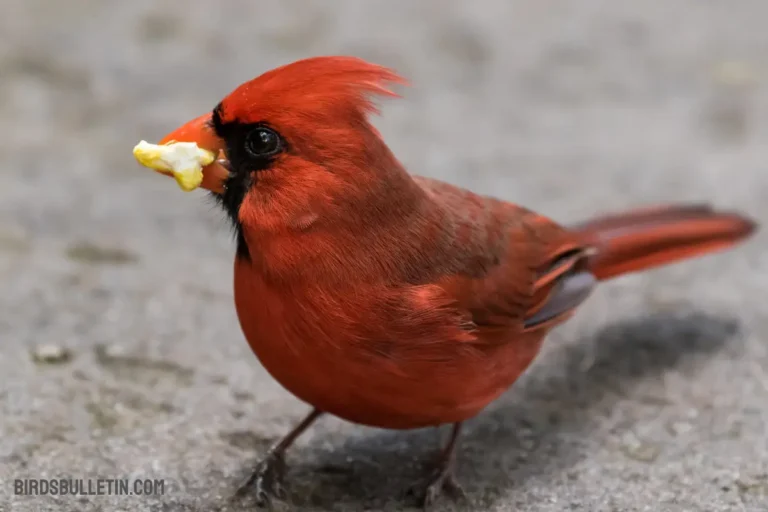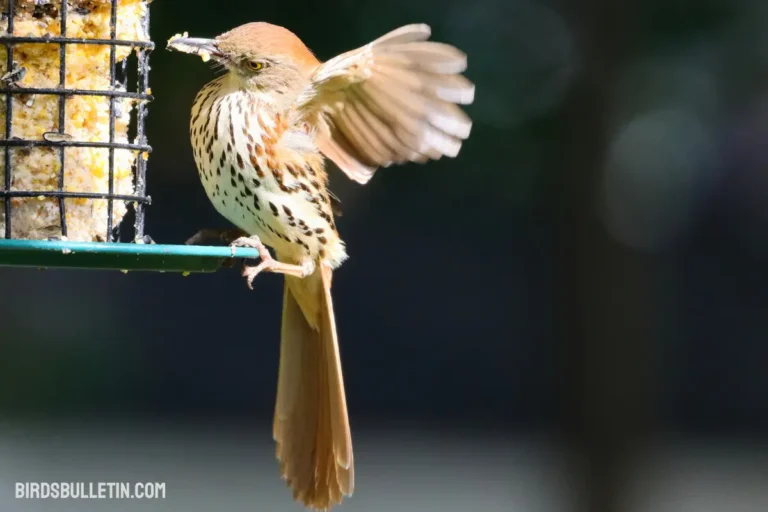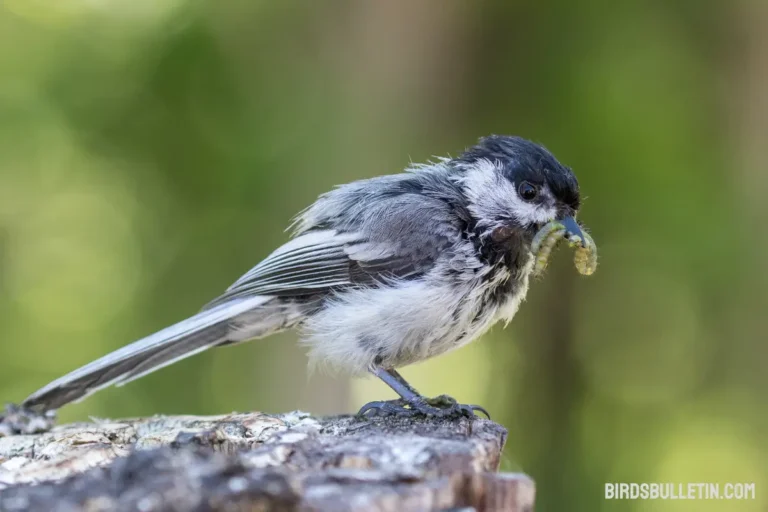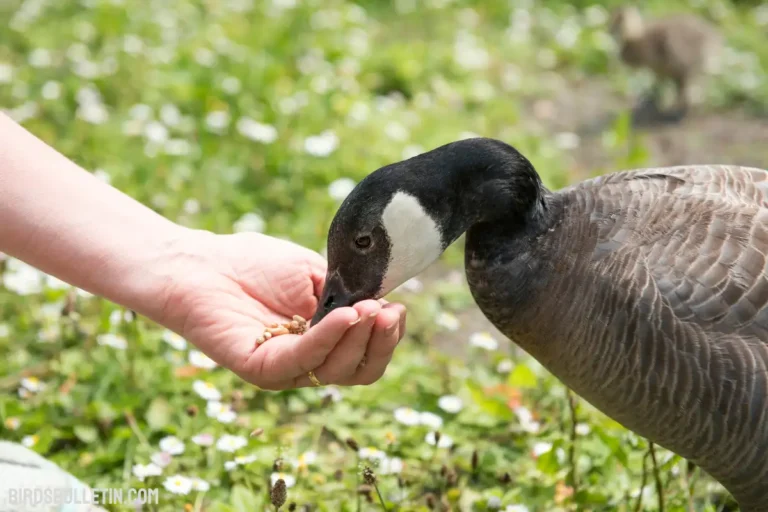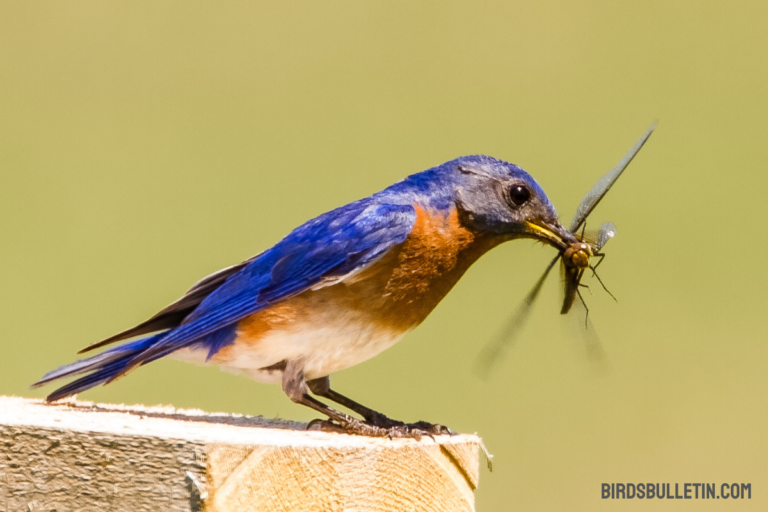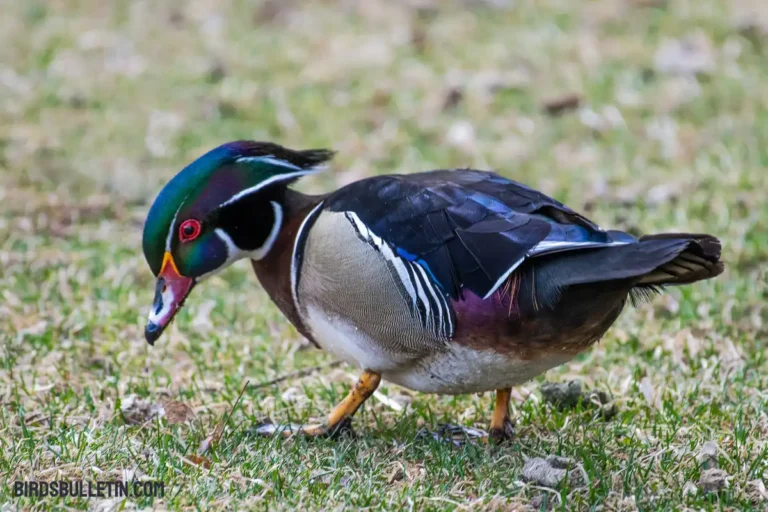What Do Northern Mockingbirds Eat?
Northern Mockingbirds are omnivorous, consuming both plant and animal material. Their diet varies based on season, location, and availability. But some key components make up the bulk of their nutritional intake.
Table of Favorite Foods
| Food Category | Examples |
|---|---|
| Insects | Grasshoppers, beetles, caterpillars, ants, wasps, flying insects |
| Spiders and Centipedes | Variety of spiders, centipedes |
| Snails and Worms | Snails, earthworms |
| Berries and Fruits | Mulberries, raspberries, blackberries, figs, grapes, currants, strawberries |
| Seeds | Weed seeds, grass seeds |
| Human Food Scraps | Bread, crackers, meat, cheese, pet food |
Want to learn more about birds’ food and diet:
How Do They Gather Food?
This northern bird employs various tactics to find the foods they prefer. To catch insects, mockingbirds perch on a high vantage point like a tree branch, fence, or power line. From there, they scan the ground and vegetation before flying down to attack spotted prey.
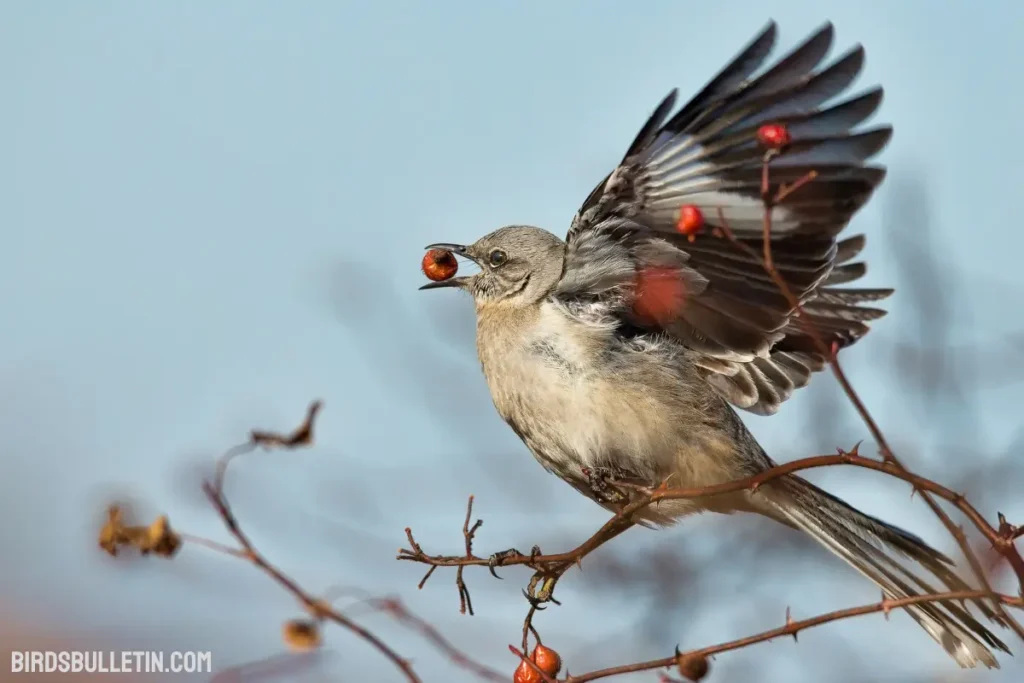
They also run along the ground rapidly stopping to pick up insects and worms disturbed by their movements. In berry patches and fruit trees, mockingbirds flit from branch to branch plucking individual fruits to eat. They sometimes hover in place briefly to reach fruits and berries clustered deep inside the foliage.
Mockingbirds aggressively defend food resources from other birds that try to move into their foraging area.
Urban mockingbirds adapted to exploit human food sources. They scavenge scraps from picnic tables, fast food parking lots, and unsecured trash cans. Mockingbirds frequent backyards to eat pet food, seeds from bird feeders, and insects attracted to lights at night.
Their resourcefulness and willingness to eat human foods help mockingbirds thrive around cities and suburbs.
What Do They Eat in Winter?
Northern mockingbirds rely more heavily on fruits and berries during the winter when insect populations decline. Some key fruits consumed are winter berries like holly, juniper, sumac, Virginia creeper, and mistletoe. Mockingbirds also eat large amounts of seeds from grasses, flowering plants, and agricultural grains like corn, wheat, sorghum, and millet.
They forage for fruit and seeds across open terrain like fields, pastures, roadsides, and lawns. They use sturdy fence posts and small trees in these open areas as observation perches to spot food sources on the ground.
Mockingbirds supplement their mainly fruit and seed diet by catching any insects, larvae, or worms they can find under decaying leaves, logs, and other debris.
During harsh winters, mockingbirds congregate near bird feeders stocked with seed mixes, suet, and fruits to help get enough calories and nutrients when wild foods become scarce.
This bird also scavenges for scraps around rural homesteads or urban fast-food restaurants and dumps when faced with extreme weather conditions. Their willingness to eat both natural and human foods improves northern mockingbirds’ overwinter survival.
What Do Their Babies Eat?
Northern mockingbird chicks hatch in the spring after a 12–14-day incubation period. Both parents feed the nestlings a protein-rich diet of insects and other invertebrates to ensure rapid growth and development.
Some common insects provided to chicks include grasshoppers, crickets, beetles, caterpillars, ants, wasps, and flies.
Parent mockingbirds find food within 100-200 feet of the nest to avoid prolonged time away from the vulnerable chicks. They capture insects from the air, ground, and vegetation then carry them back in their beaks to the nest. Mockingbird parents remove legs, wings, and other body parts from larger insects to make them easier for the chicks to swallow whole.
Parent mockingbirds feed the nestlings continuously, up to several hundred times per day. The amount of food brought increases rapidly as the chicks grow older and demand more nutrition.
Both male and female mockingbirds feed the young, allowing efficient delivery of the huge quantity of insects required. Mockingbird chicks fledge the nest at 10-14 days old but continue to be fed by their parents for 2-3 weeks more as they learn to forage independently.
Frequently Ask Questions
01. What do mockingbirds drink?
Mockingbirds get most of their liquid needs from the foods they eat. Berries and fruits have a high water content. Mockingbirds also drink free water from bird baths, puddles, lakes, and dripping outdoor faucets.
02. Do mockingbirds eat birdseed?
Yes, mockingbirds readily eat bird seeds from feeders. They prefer millet, sunflower seeds, cracked corn, and suet mixes. Platform feeders are ideal for mockingbirds.
03. Do mockingbirds eat mealworms?
Mealworms are an excellent source of protein for mockingbirds. Live and dried mealworms are consumed, especially to feed their chick’s protein for rapid growth.
04. What feeders attract mockingbirds?
Platform, hopper, tube, and tray bird feeders filled with a variety of seeds, grains, mealworms, and suet will attract mockingbirds to backyards. Adding a birdbath provides drinking water.
Wrapping Up
Northern mockingbirds are adaptable omnivores that consume a wide variety of insects, fruits, seeds, and even human food scraps. Their varied diet allows them to inhabit diverse environments across North America in both rural and urban areas.
Mockingbirds forage actively using specialized techniques to catch insects and gather plant foods. While mockingbirds eat more insects in the spring and summer, fruits and seeds sustain them during the fall and winter.
Overall, the northern mockingbird’s expansive palate demonstrates how dietary flexibility promotes avian survival.
References:
- Cornell Lab of Ornithology. “Northern Mockingbird.” All About Birds. https://www.allaboutbirds.org/guide/Northern_Mockingbird/lifehistory
- Audubon Society. “Guide to North American Birds: Northern Mockingbird.” https://www.audubon.org/field-guide/bird/northern-mockingbird


